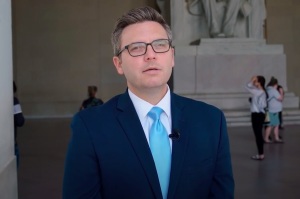Study: 9/11 Firefighters Have 19 Percent Higher Risk for Cancer
Firefighters who responded to the 9/11 terrorist attacks on New York City’s World Trade Center were exposed to a cloud of toxic dust and smoke puts them at a 19 percent higher risk of developing cancer, a new study reveals.
A study, published Thursday in the British medical journal The Lance, analyzed the cancer rates among exposed firefighters. The analysis involving 10,000 NYC firefighters could help rescue workers now suffering from cancer receive federal health benefits.
"The study clearly shows that World Trade Center exposure in these firefighters led to an increase in all types of cancer," said David Prezant, FDNY chief medical officer and one of the co-authors of the study.
Preznant added, “This is not an epidemic.”
Firefighters working in the rubble of Ground Zero were exposed to several known carcinogens, including polycyclic aromatic hydrocarbons, polychlorinated biphenyls and dioxins.
The James Zadroga 9/11 Health and Compensation Act, which set aside $4.3 billion to treat, compensate and monitor people suffering from any health conditions associated with the Sept. 11 attacks - such as asthma and other respiratory problems - does not include cancer in its coverage.
Regardless, officials from the National Institute for Occupational Safety and Health are required to conduct reviews of the studies and determine whether to add illnesses to the list.
On July 26, Dr. John Howard, director of the National Institute for Occupational Safety and Health, released the first report, which said available data had not yet confirmed the link between exposure to toxins released after the attack and cancer.
However, the study released Sept. 1 is the largest analysis of cancer to date in firefighters who responded to the World Trade Center attacks.
Researchers observed the occurrence of cancer in nearly 10,000 FDNY male personnel in the seven years following the 9/11 attacks. The number of women was too few to create a meaningful sample size.
Eligible participants of the study were firefighters who were active on Jan. 1, 1996 and who were known to be exposed to substances at Ground Zero. Results found that 8,927 men spent at least one day at the World Trade Center site in the 10 months following Sept. 11. Almost all of them were exposed in the first two weeks of the attack.
Of the number exposed, a total of 263 developed cancer. After incorporating factors such as age and race, the researchers found that the figure represented an increased risk of 19 percent or 38 cases that wouldn’t have occurred if not for toxin exposure from Ground Zero.
According to Prezant, the study showed an increase in “all” cancers – it was not designed to show an increase in a particular type of cancer.
The study also did not investigate the health impacts on other rescue workers, which will be covered in a separate study.
Reuters reported that Dr. James Melius of the New York State Laborers’ Health Fund said the study supported the addition of cancer to the James Zadroga 9/11 Health and Compensation Act.
According to Melius, waiting for definitive studies to be completed before 9/11 responders suffering from cancer could receive medical benefits “would be unfair and would pose a hardship for workers who willingly risked their health by responding without hesitation to the WTC crisis.”
He added, "For those who were down there and do not have cancer, this is not an epidemic, but it is an increased risk. So the most important thing to do is enroll in an active cancer prevention and screening program."




























